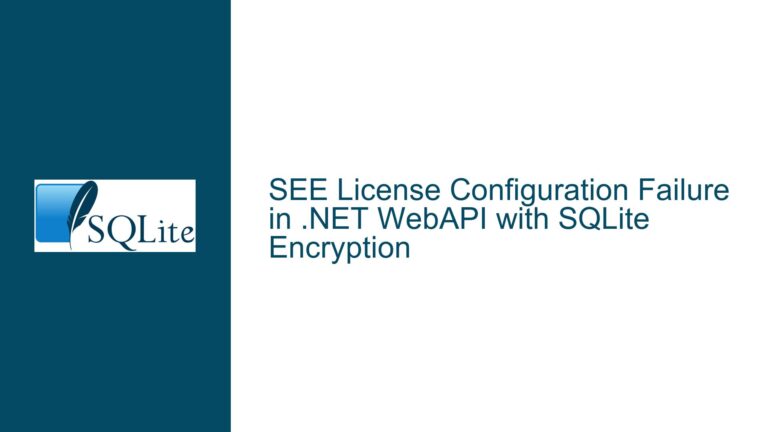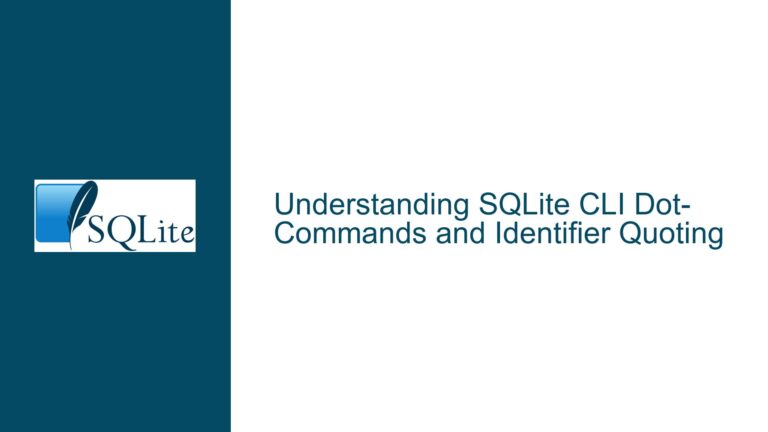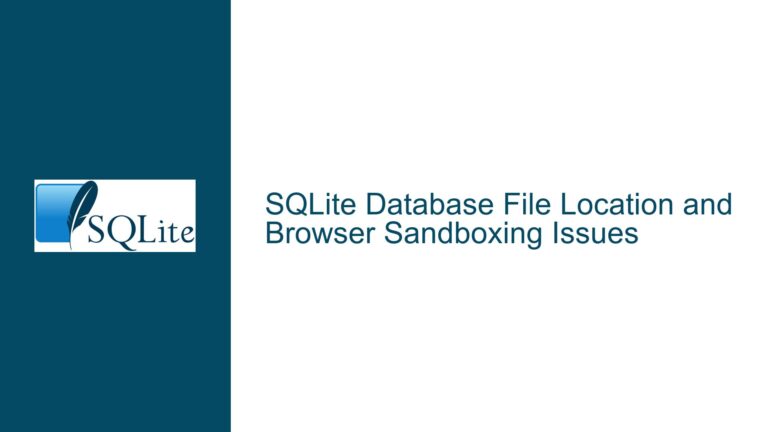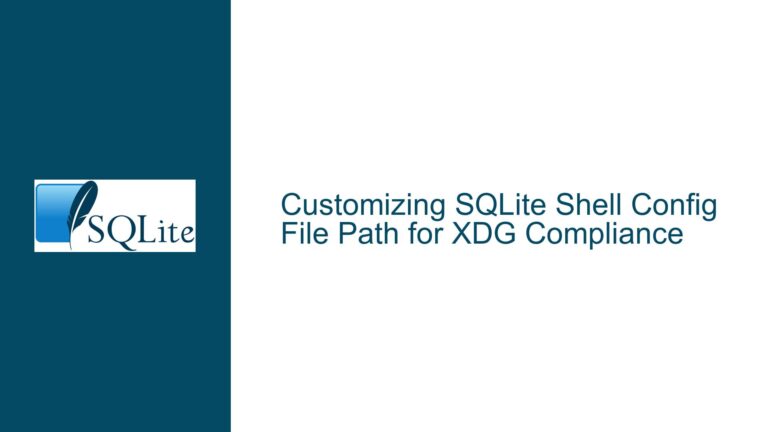Transient “Attempt to Write a Readonly Database” Error in SQLite WAL Mode
SQLite WAL Mode and "BEGIN IMMEDIATE" Locking Mechanism
SQLite is a lightweight, serverless database engine that is widely used in applications requiring embedded database functionality. One of its key features is the Write-Ahead Logging (WAL) mode, which allows for higher concurrency by enabling readers and writers to operate simultaneously without blocking each other. However, this concurrency comes with its own set of challenges, particularly when dealing with locking mechanisms such as BEGIN IMMEDIATE.
In WAL mode, SQLite uses a different approach to manage transactions compared to the default rollback journal mode. Instead of writing changes directly to the database file, SQLite writes them to a separate WAL file. This allows multiple readers to continue accessing the database while a writer is making changes. However, when a transaction is started with BEGIN IMMEDIATE, SQLite attempts to acquire a reserved lock on the database file, which is necessary for writing changes. If this lock cannot be acquired, the transaction will fail.
The error message "attempt to write a readonly database" typically indicates that SQLite is unable to acquire the necessary locks or permissions to write to the database. This error can be particularly perplexing when it occurs transiently, as in the case described, where the database is generally writable but occasionally fails with this error.
Intermittent Lock Contention and Filesystem Issues
One of the primary causes of the "attempt to write a readonly database" error in SQLite, especially in WAL mode, is intermittent lock contention. When multiple clients attempt to acquire a reserved lock simultaneously, there can be a race condition where one client temporarily prevents another from acquiring the lock. This can happen even if the lock is eventually released, as the timing of lock acquisition can be affected by various factors such as system load, I/O latency, and the number of concurrent clients.
Another potential cause is filesystem issues. SQLite relies on the underlying filesystem to manage file locks and ensure that writes are atomic and durable. If there are any issues with the filesystem, such as delayed write operations, corrupted inodes, or misconfigured mount options, SQLite may temporarily fail to acquire the necessary locks or write to the database file. This can result in the "attempt to write a readonly database" error, even if the filesystem appears to be functioning correctly.
In addition, certain filesystem features, such as lazy allocation or delayed allocation, can cause SQLite to behave unexpectedly. These features are designed to improve performance by deferring the allocation of disk space until it is actually needed. However, they can also introduce delays in write operations, which can interfere with SQLite’s locking mechanism and lead to transient errors.
Diagnosing and Resolving Transient Write Errors in SQLite
To diagnose and resolve transient "attempt to write a readonly database" errors in SQLite, it is important to first rule out any obvious issues such as incorrect file permissions or insufficient disk space. Once these have been ruled out, the focus should shift to identifying and addressing any potential lock contention or filesystem issues.
One approach is to increase the timeout for acquiring locks. By default, SQLite uses a 5-second timeout for acquiring locks, but this can be increased using the sqlite3_busy_timeout function. Increasing the timeout can help reduce the likelihood of transient lock contention errors, although it may also increase the latency of write operations.
Another approach is to use the PRAGMA journal_mode command to switch to a different journaling mode. While WAL mode is generally recommended for high-concurrency applications, it may not be suitable for all use cases. Switching to rollback journal mode or another journaling mode may help reduce the likelihood of transient write errors, although it may also reduce concurrency.
In addition, it is important to monitor the filesystem for any signs of issues. This can be done using tools such as dmesg, fsck, and smartctl to check for errors, corruption, or hardware issues. If any issues are found, they should be addressed as soon as possible to prevent further errors.
Finally, it may be helpful to log detailed information about each transaction, including the time it was started, the time it completed, and any errors that occurred. This information can be used to identify patterns or trends that may indicate the root cause of the transient write errors. For example, if the errors tend to occur during periods of high system load, this may suggest that the system is under-provisioned and needs additional resources.
| Troubleshooting Step | Description |
|---|---|
| Increase Lock Timeout | Use sqlite3_busy_timeout to increase the timeout for acquiring locks. |
| Switch Journal Mode | Use PRAGMA journal_mode to switch to a different journaling mode. |
| Monitor Filesystem | Use tools such as dmesg, fsck, and smartctl to check for filesystem issues. |
| Log Transaction Details | Log detailed information about each transaction to identify patterns or trends. |
By following these steps, it is possible to diagnose and resolve transient "attempt to write a readonly database" errors in SQLite, ensuring that the database remains reliable and performant even under high-concurrency conditions.






